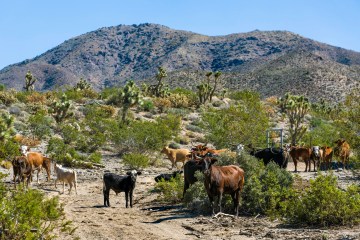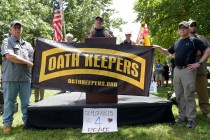A career on the range that was mostly cooperative — except with Cliven Bundy
Ben Collins is retired now and living in Oregon, but he spent most of his career roaming Nevada and the region with the Bureau of Land Management.
When it comes to the complex discussion of the management of Western lands, he brings an even-handed perspective that only a fellow of his experience can provide. He studied range management at Idaho University in Pocatello in the early 1960s and after graduation joined the BLM, perhaps not fully appreciating its mixed reputation among cattle ranchers, sheepherders and rural Westerners in general. At times it must have seemed that the BLM was the federal agency ranchers most loved to hate.
But he also learned that many of those same ranchers couldn’t survive in an increasingly crowded West without those same feds they at times claimed to despise.
His first stop as a ranger conservationist was Carson City, where he learned to work with what he called “range folks, not so much on licensing and grazing, but development of projects, the range management of water, fences and springs. It was my job to help improve the range and work with the ranchers on those projects.”
The working relationship between BLM rangers and ranchers isn’t always full of the rancor that has defined the Old West showdown led by Bunkerville cattleman Cliven Bundy, now under federal indictment in connection with a 2014 standoff with federal and local authorities.
From Carson City, Collins made stops in Reno, Winnemucca, Bishop, California and Washington, D.C., before finding himself in charge of the district and spending plenty of time in a booming Southern Nevada of the early 1990s. Las Vegas was reaching into the desert, BLM auctions were growing, water issues became acute, and the desert tortoise became a creature of controversy. And, yes, he recalled, the ranchers and the BLM rangers still had their differences.
But by then Collins had long since learned that many ranchers understood the role of the rangers in ensuring the correct use of public lands. It wasn’t a free range free-for-all. Cattle ranchers and sheepherders had to co-exist with American Indian tribes and — this may be the trickiest part of all — annual changes in the rules and regulations that govern rural regions.
“There were always some people who were unhappy,” Collins said. He never met a rancher who wanted his range curtailed or to be forced to bring in his herd earlier than absolutely necessary to prevent the cattle from overgrazing the public land. But most complied.
Most. But not Cliven Bundy.
“Maybe I am biased, but cooperation was outstanding during my eight years as District Manager,” Collins recalled in an interview and letter. “I could go on, but my point is that Cliven Bundy was not a cooperator in any sense of the word. After many facilitated sessions on how to work with range users that could be affected by the listing to the tortoise, it was determined that for a specified time in the spring (when tortoises emerged from their burrows seeking the usual flush of green annual vegetation after months in winter hibernation) cattle should come off the range for a month to let the tortoises ‘fatten up.’ Of course, Cliven rarely brought any of his cattle in from the range and he basically hit the roof. He was a frequent trespasser, but as far as I know he usually paid his grazing fees. But the idea of taking his cattle off the range put him over the edge. From that time (around 1993) he refused to pay his grazing fees.”
Several years later, it would be determined Bundy owed $1.3 million in grazing fees and assessments.In the early 1990s, though, Collins said the BLM tried to reason with him.
“He trespassed several times, which led to putting him on notice that if he continued, I would impound his cattle,” Collins said. “Again he ignored the warning. Just prior to my retirement that year (1993), we attempted to begin gathering his cattle and impounding them, but I received a call from the BLM Nevada State Director not to proceed. Probably a wise decision because we were warned by Cliven and his peers that ‘someone would get hurt.’ That was over 22 years ago and he never paid his grazing fees and ignored court orders to remove his cattle during that time.”
Then came the 2014 Bunkerville showdown. Again, the BLM tried to round up Bundy’s cattle. Again the rangers backed away to avoid an armed confrontation.
“I had a 31-year career with BLM ‘out on the range’ and found nearly all the livestock operators I had the privilege to work with were law abiding and took pride in developing grazing management with BLM,” Collins said. “Bundy is just a rare anomaly.”
John L. Smith’s column appears Sunday, Tuesday, Wednesday, Friday and Saturday. Contact him at 702-383-0295 or jsmith@reviewjournal.com. On Twitter: @jlnevadasmith






















